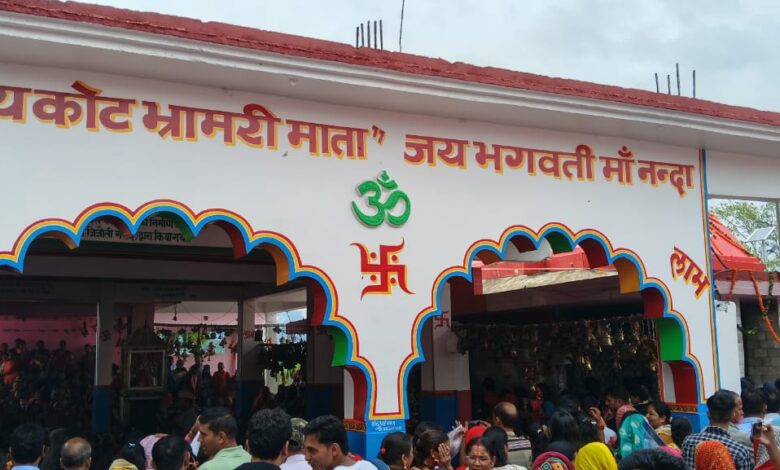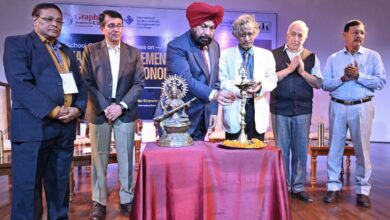Divine power worshipped as a Swarm of Bees in Kot Bhramari Temple of Bageshwar.

Divine power worshipped as a Swarm of Bees in Kot Bhramari Temple of Bageshwar
Prem Prakash Upadhyay “Natural”
Bageshwar (Garur), Sept 1
The culture, traditions, and beliefs of ‘Devbhoomi’ (abode of Gods) Uttarakhand are as ancient as human civilization itself. It is because of these spiritual attributes, mythological significance, and heritage that the land is revered as “Devbhoomi.” Over the centuries, many dynasties ruled this region, but the legends, literature, and architectural works of the Chand and Katyuri kings continue to inspire people to this day.
Just as Lord ‘Golu Devta’ is worshipped in every household of Kumaon as a family deity, Goddess ‘Nanda-Sunanda’ are revered as the presiding deity across Uttarakhand. Among the most significant shrines is the temple of ‘Maa Kot Bhramari’, located in Dungoli village of Garur tehsil in the Katyur valley of Bageshwar district. The temple is famed for its unique identity and deep-rooted faith.
As it is believed, an asura (demon) named Arun once wreaked havoc in the Katyur valley. Blessed with a boon that neither man nor God could kill him, his tyranny grew unbearable. To end his reign of terror, Goddess ‘Bhagwati’ assumed the form of a swarm of bees (bhramar) and killed the demon, liberating the people. Since then, the Goddess has been worshipped here in her Bhramari form, and the shrine came to be known as the Kot Bhramari Temple.

This temple is also known as the Gadh-Kumo Devi, as people from both Kumaon (Bageshwar) and Garhwal (Chamoli) regions worship her as their family goddess. The Katyuri kings, who ruled between the 6th and 11th centuries, considered her their Kuldevi (clan deity), while the Chand rulers revered Goddess Nanda.
Another saying is that when the Chand rulers brought the sacred stone idol of Goddess Nanda from Garhwal to Almora, they halted at Dungoli. The next morning, the idol could not be lifted, as if the Goddess herself had chosen to stay at the place. Realizing her divine will, the king consecrated the idol there, and since then, the shrine has become a major seat of devotion.
The temple continues to be the center of religious and cultural life. During Nanda Ashtami, a grand fair is organized that lasts for three days. The festivities include the singing of traditional “Nanaul” songs, “Devi Jagars,” torch processions, ‘Kalash Yatra’ by villagers of Jhalamali, and vibrant cultural programmes. Local priests adorn the idol of Nanda with ornaments, which are later returned to Dungoli after the immersion of the idol.
Prominent writer Mohan Joshi notes that devotion to Maa Bhramari and Maa Nanda has only grown with time, even among people settled outside Uttarakhand. Local residents emphasize that such fairs not only preserve ancient traditions but also generate opportunities for tourism and employment.
The unwavering faith and deep devotion of the people ensure that the Kot Bhramari Temple remains a shining symbol of Uttarakhand’s spiritual heritage.




